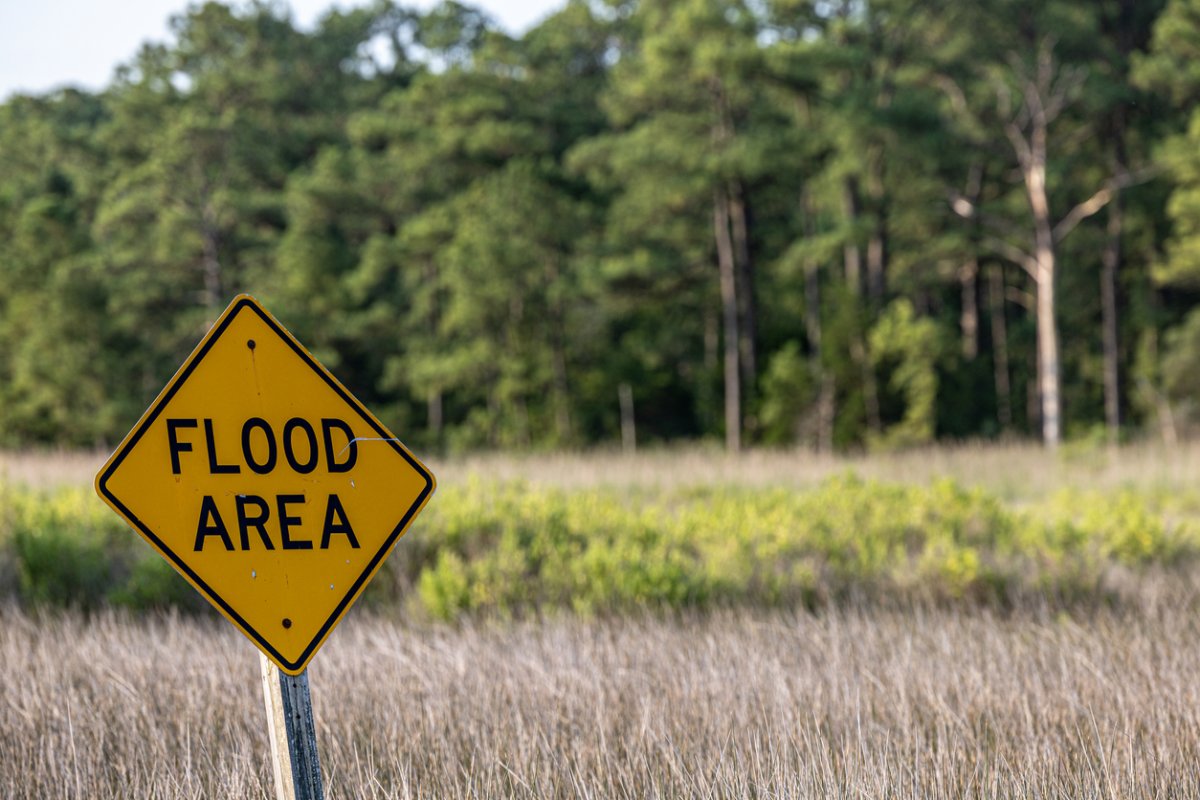

We may earn revenue from the products available on this page and participate in affiliate programs. Learn More ›
Q: I’m considering buying a home on a river. Though the river has never flooded before, the home is in a designated flood zone. I’m worried I’ll have to get flood insurance on top of my homeowners insurance. Which flood zones require flood insurance?
A: Anyone buying a home next to a body of water might worry about flooding, but it’s not just waterfront homes that face the risk of flood damage. Many homes could face flooding from flash floods or heavy rainfall that strains municipal sewer systems. Homeowners can protect their property against the threat of a flood by purchasing a flood insurance policy, but they may wonder if such coverage is necessary.
Although there is no federal mandate requiring homeowners to purchase flood insurance, mortgage lenders may require borrowers who live in areas at high risk for flooding to purchase this coverage. Homeowners and home buyers can assess their risk of flooding by checking their property’s flood zone. Which flood zones require flood insurance? Generally speaking, homes in flood zones designated with an A or V (according to Federal Emergency Management Agency, or FEMA, flood maps) may need to be insured with flood coverage in certain situations. Homeowners in these areas may want to check with their mortgage provider to learn about potential flood insurance coverage requirements.
Flood insurance will likely be required for homes located in high-risk flood zones.
FEMA calculates flood risk using factors such as base elevation and existing floodplain boundaries. Areas with a high risk of flooding are often categorized into flood zones designated with an A or V. Homeowners in these zones are more likely to have to purchase flood insurance, but this can depend on the type of mortgage on their home and whether their mortgage lender requires flood coverage.
Being in a high-risk flood zone doesn’t have to be a deal-breaker when someone is purchasing a home, but it’s recommended that home buyers carefully consider the implications of a higher flood risk. Before purchasing a home in a high-risk flood zone, home buyers may want to talk to their mortgage lender about flood insurance requirements.
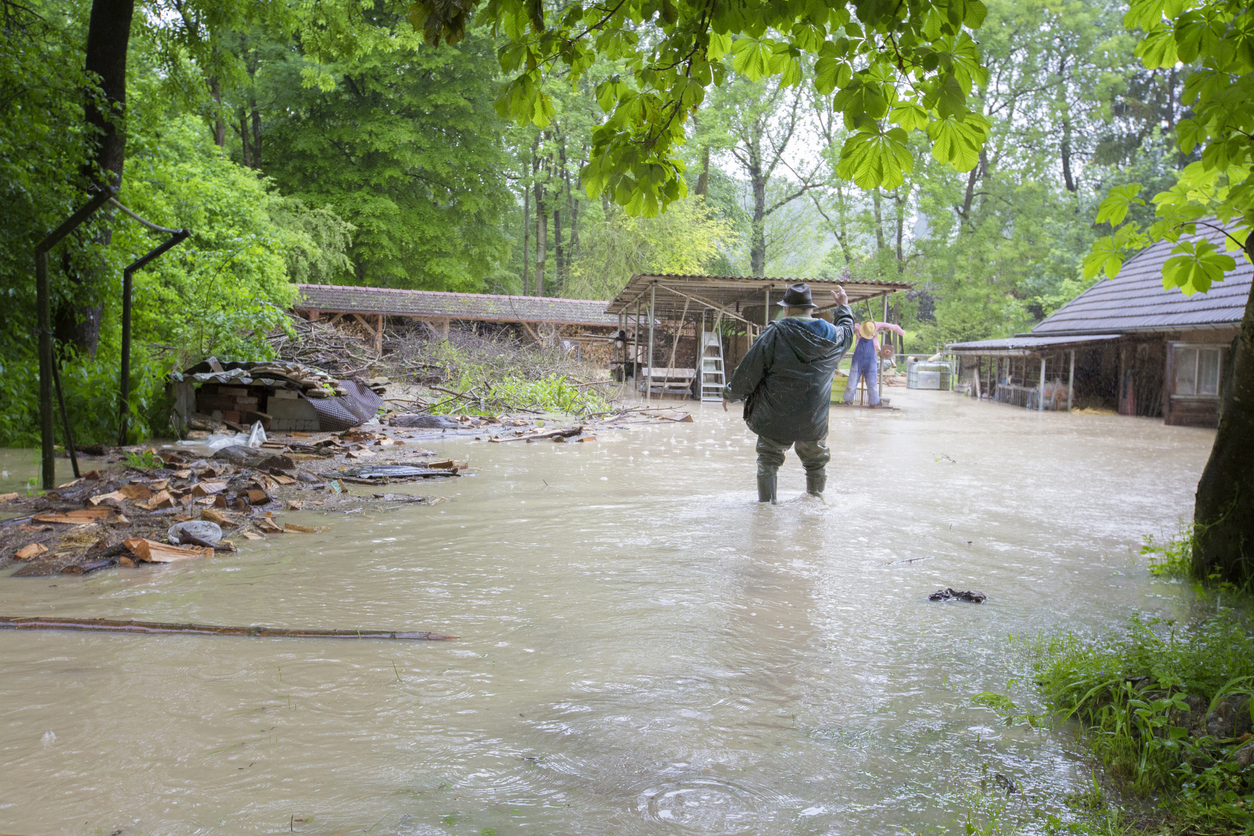
All homes fall into one of three categories of FEMA-designated flood zones: low-risk, moderate-risk, or high-risk.
Every house and building faces some risk of flooding, and FEMA categorizes that risk through different flood zones. There are three types of zones that a building may sit within: high-risk, moderate-risk, or low-risk. The level of flood risk is designated by a letter code attached to each flood zone:
- High-risk: Flood zones designated with an A or V
- Moderate-risk: Zones designated with a B or X (shaded on flood maps)
- Low-risk: Zones designated with a C or X (unshaded on flood maps)
Although homes in B, C, and X zones are at lower risk of flooding, all homes can potentially flood under various circumstances. According to FEMA, just 1 inch of water in a home can cause more than $25,000 in damage. Additionally, it’s rare that a homeowners insurance policy would cover flood damage as part of its standard terms, leaving policyholders on the hook for expensive repairs after a flood.
Homeowners—or home buyers—can check their property’s flood risk using FEMA flood maps.
“What flood zone am I in?” is a common question from homeowners and home buyers who are concerned about the threat of flooding to their property. Homeowners can search for their flood zone by address using FEMA’s flood maps. There are also options to search for a flood zone by ZIP code, county, or city. However, homeowners and home buyers may want to remember that floodplains often overlap city limits or county lines. It’s common for one part of a city or town to be within a high-risk flood zone and another point in the area to be at a lower risk for flooding.
A flood zone map is generally a good place for homeowners to start their search to better understand their flood risks. However, some map data could be outdated. As floodplains change over time—and sometimes quite quickly—it’s a good idea for homeowners to check with their local government from time to time regarding any recent updates to flood data in the area.
Home buyers who finance a home in a Special Flood Hazard Area using government-backed mortgages are legally required to purchase flood insurance.
Homes in flood zones starting with A or V—the high-risk zones—are considered Special Flood Hazard Areas (SFHA). An SFHA marks where FEMA flood regulations are in place for communities, which may include requiring homeowners with certain types of mortgages to purchase flood insurance.
Home buyers using government-backed loans must purchase flood insurance if they’re purchasing a home located in an SFHA. Government-backed loans include VA loans, FHA loans, and USDA loans. However, even home buyers looking for non-government-backed mortgages, such as a conforming loan, may be required by their lenders to purchase flood insurance in these zones. Many mortgage lenders require flood insurance for financed homes located in an SFHA regardless of federal mandates. By requiring borrowers to buy flood insurance, lenders lower their own risk in the event a mortgaged property is destroyed during a flood.
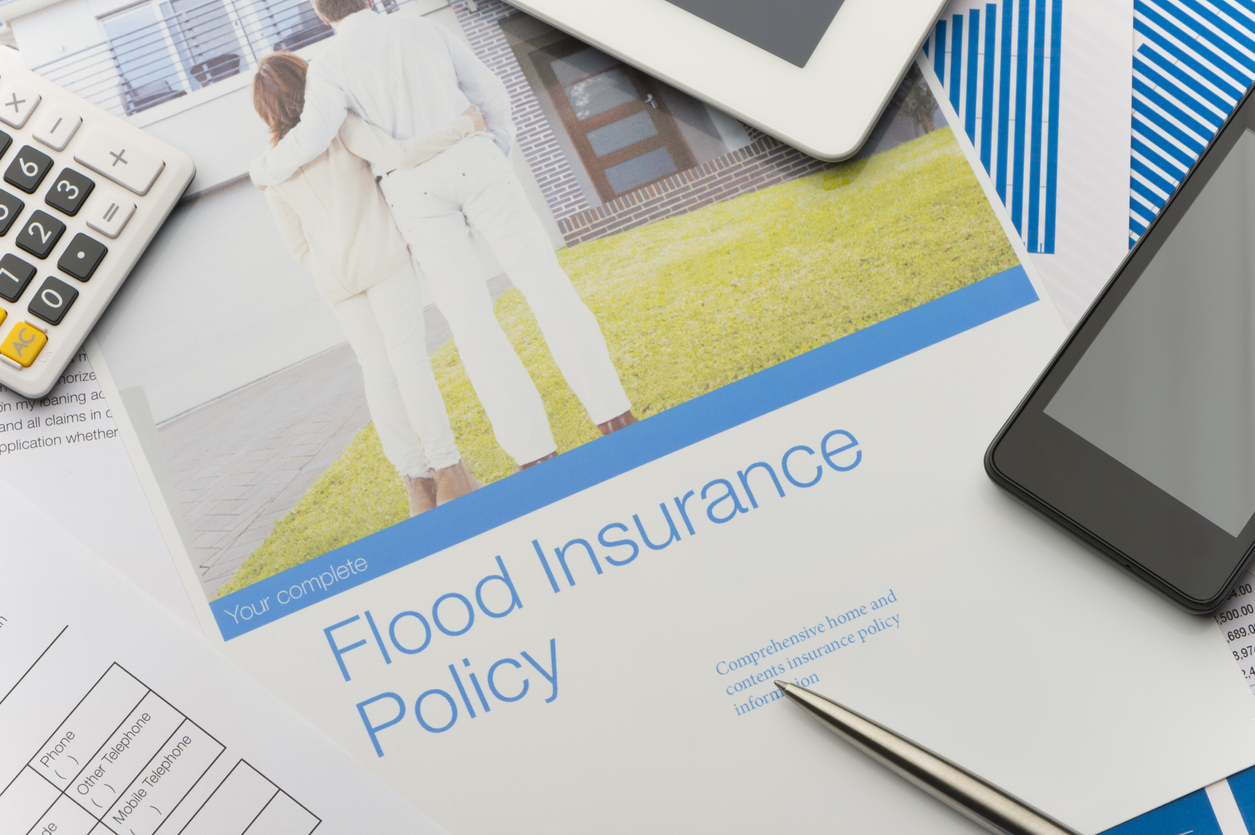
Although flood insurance is not federally mandated for homes in low- and moderate-risk flood zones, mortgage lenders might still require it.
There is no federal requirement for a home buyer to buy flood insurance for homes in the B, C, or X flood zones, even if using a government-backed mortgage. However, mortgage lenders may require borrowers in these zones to buy flood insurance if they perceive there to be sufficient risk of flooding, regardless of what FEMA flood zones indicate. It’s typical for mortgage lenders to require borrowers to purchase hazard insurance on any financed home. Hazard insurance isn’t exactly the same as homeowners insurance, as it is actually the part of the homeowners insurance policy that protects the structure of the home from certain hazards. Mortgage lenders may take a similar approach to flood insurance, requiring borrowers to buy enough flood coverage to protect the structure of the home in the event of severe water damage.
Homeowners can ask their mortgage lender about flood insurance requirements while researching and applying for a mortgage. Depending on the lender, there may be levels of flood insurance requirements based on the home’s location and build. For example, a buyer might want to purchase land along a lake to build a home. The buyer may have to purchase a certain level of flood insurance if they build the house close to the shoreline. However, the lender may change the coverage requirements if the buyer follows elevated house plans for flood zones, which could reduce the risk of flooding.
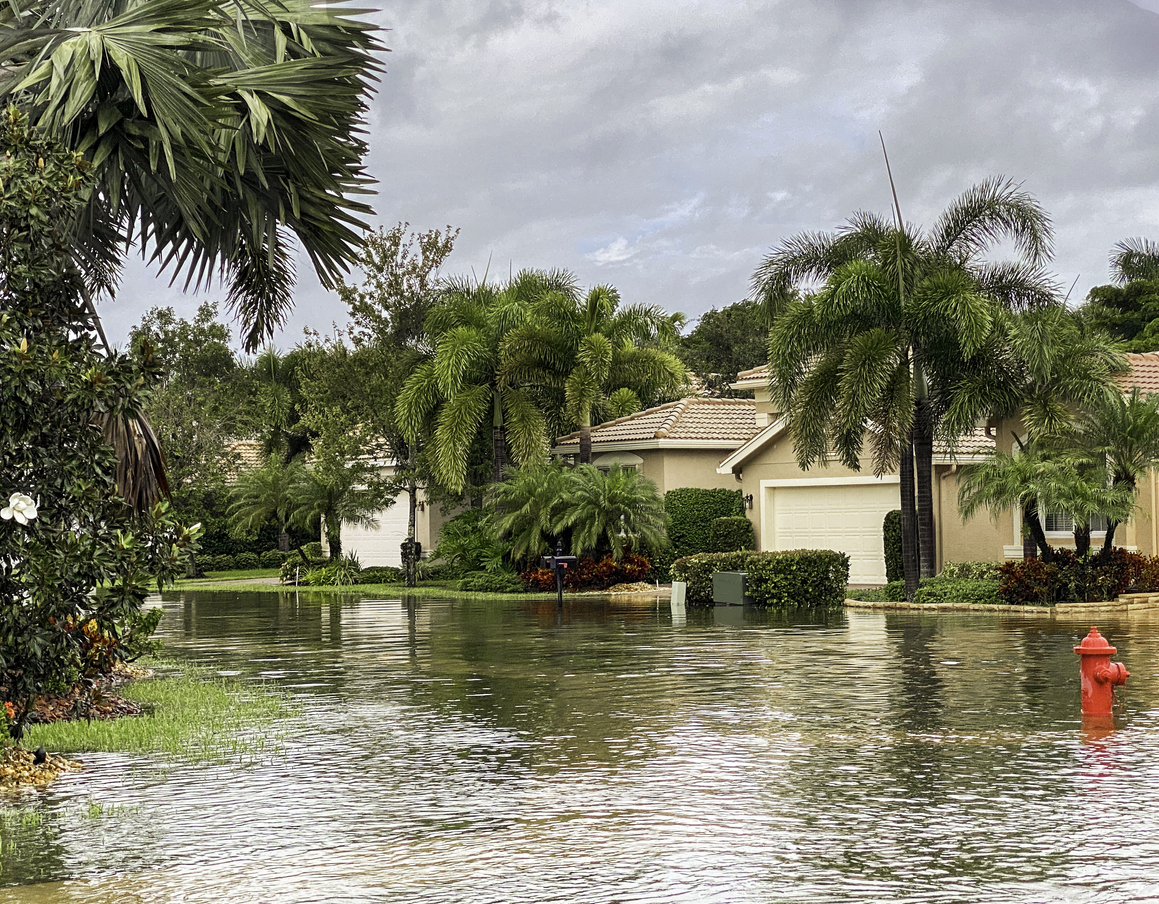
Also, homeowners who have accepted FEMA grants to pay for water damage may need to purchase flood insurance regardless of their flood zone.
Homeowners who received FEMA funds to cover floodwater damage in the past are generally required to maintain flood insurance to receive future assistance. Past emergency funds could include FEMA grants as well as low-interest disaster loans from the Small Business Administration (SBA). If a home has experienced flood damage in the past, there’s a good chance it could happen again, so homeowners may want to consider purchasing flood insurance to both pay for future damages and remain eligible for FEMA funding assistance.
Some homeowners may consider FEMA emergency assistance to be an adequate alternative to flood insurance, but these funds aren’t always available. Federal disaster assistance is generally only available if an official disaster declaration is made by the president of the United States. Many flooding events, especially localized events such as heavy rains, won’t be declared disasters. Additionally, many disaster-relief funds are awarded as loans, which must be repaid with interest.
If flood insurance is required, homeowners may need to purchase enough coverage to match their mortgage principal or pay for a full rebuild.
When required by their lenders to purchase flood insurance, homeowners often must carry a certain amount of coverage. The exact requirements can vary from one lender to another, but common flood insurance coverage level requirements include:
- The mortgage principal balance;
- Maximum building coverage amounts offered by the National Flood Insurance Program (NFIP); and
- The cost to rebuild the home, also called the replacement cost.
As different lenders may have different coverage requirements, homeowners may want to talk to their lender about specific requirements for their mortgage. Generally, flood insurance requirements from lenders only last as long as the mortgage is active. If the homeowner pays off the mortgage, they could potentially get rid of any flood insurance mandated by their lender. However, it’s not often recommended for a homeowner to drop flood insurance coverage if their property is in a high-risk area, as this leaves the home vulnerable to uninsured damages.
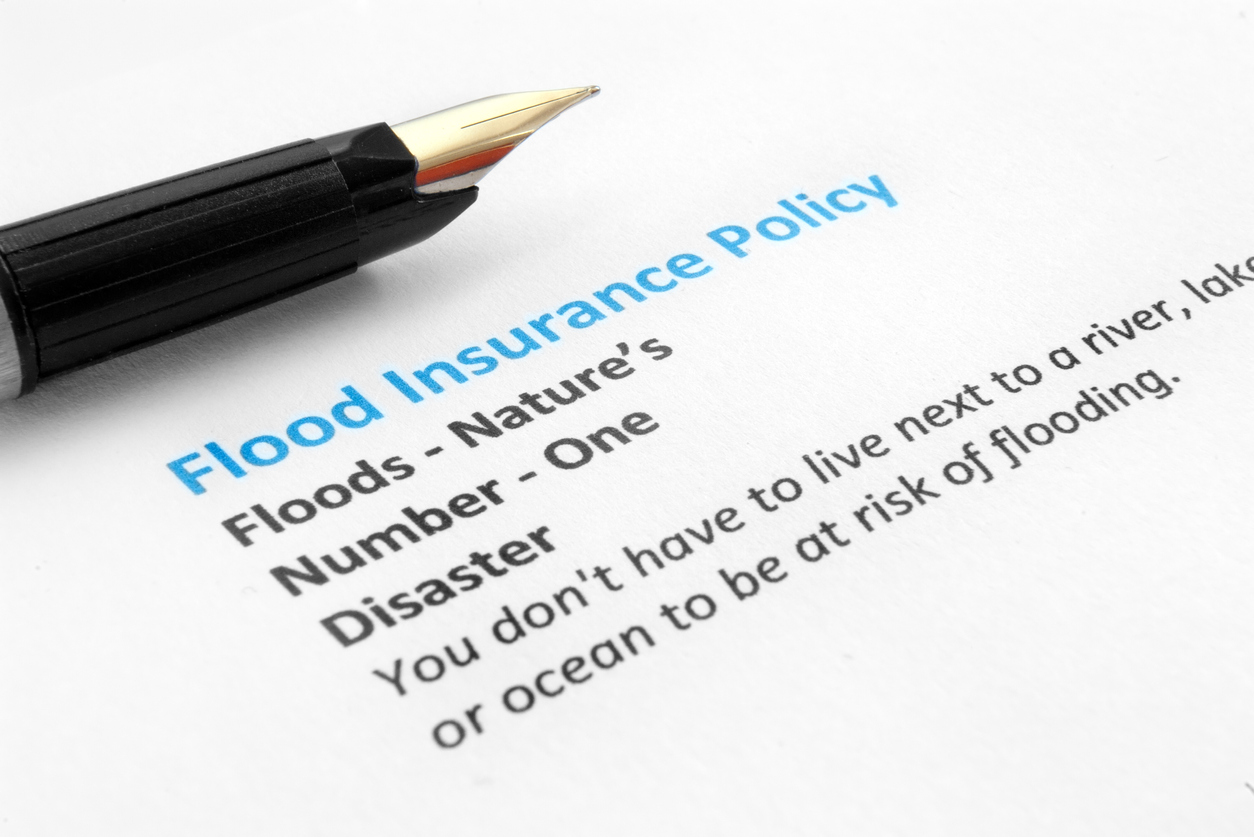
Homeowners can buy private flood insurance as an endorsement or stand-alone policy—or get coverage through the National Flood Insurance Program.
Some homeowners insurance companies also offer flood insurance, making it relatively easy for homeowners to get coverage for their property. Private flood insurance companies typically offer coverage in two ways:
- Stand-alone flood insurance policies, and
- Endorsements to an existing homeowners insurance policy.
Stand-alone flood insurance policies are entirely separate from homeowners insurance and specifically provide coverage for flood damage. A flood coverage endorsement, on the other hand, is an add-on that some insurance companies offer for their homeowners insurance policies. Although homeowners insurance only covers water damage in certain scenarios and typically excludes flood damage, endorsements may offer a way to add flood coverage to a policy. This could be a convenient option for policyholders who don’t want to manage multiple insurance policies for their property. One of the many things people may not know about flood insurance is that they can buy it through the federal government. Homeowners living in participating communities may also qualify for flood insurance coverage through the NFIP.
Flood insurance companies generally offer two types of flood insurance coverage: building property coverage and personal property (or contents) coverage. Building property coverage helps policyholders repair physical damage to the structure of their home or even pay for a total rebuild. Personal property coverage, meanwhile, protects the contents of the home—i.e., the policyholder’s belongings—against flood damage.
Even low-risk zones could experience costly flooding, so insuring against water damage could be a good idea no matter where a home is located.
While a mortgage lender may not require flood coverage in a low-risk flood zone, some homeowners still choose to purchase flood insurance. The average cost of flood insurance is around $770 per year, but it can vary greatly depending on the location of the property and the amount of coverage a homeowner purchases. Given the potentially high cost of repairing damage caused by floods—not to mention that homeowners insurance often does not cover flood damage—this expense may be worth the peace of mind that flood insurance can provide. That’s especially true for homeowners who worry about preparing for flash floods, microbursts, and other weather events that can lead to flooding without much—if any—warning.
Homeowners concerned about the flood insurance costs in their area are encouraged to shop around for the best price and coverage options. As with other types of insurance, flood insurance rates vary quite a bit from one company to another. Homeowners can often find the right coverage at an affordable price by getting a flood insurance quote from multiple companies. It may take a little work, but it’s usually worth the effort to compare different options in order to find the best flood insurance available.
